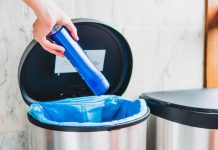Over the years, many Americans have placed a greater emphasis on the importance of recycling. Not only do many families utilize recycling bins, but businesses have also made efforts to go green. Certain manufacturing processes, for example, involve 100% recyclable materials and ensure that all scrap and unused material can be recycled. And roughly 88% of the world’s steel is recycled, with two out of three tons of new steel originating from old steel. In fact, 69% of all steel—more than 80 million tons—is recycled in North America each year.But while you might believe you’re doing the right thing by recycling used bottles and old building materials, have you ever wondered where these items go after they’re thrown in the bin?
In the past, municipalities would send recyclables like paper, plastic, and scrap metals to China for processing. But since January 1, China has no longer accepted most recyclable waste from the United States. While some agencies are able to process these materials domestically or send them to other countries, others have very few options. This has unfortunately prompted many of these materials to end up in landfills — exactly the place environmentally conscious people don’t want to send these items.
Apparently, however, it seems like there may have been an attempt to simply dump recyclables in the port of another foreign country in the hopes that no one would notice.
According to officials in Cambodia, 1,600 tons of plastic waste housed in 83 shipping containers were found at the country’s major southwestern seaport. When the shipping containers, which are typically eight feet wide and 9.5 feet tall, were opened by customs personnel, it was discovered that they were labelled as “recyclable products” with no labels of plastic waste.
Neth Pheaktra, Secretary of State and Spokesman to the Ministry of Environment, responded that the containers will be sent back to their originating countries. Officials note that 70 of the containers came from the United States, while 13 came from Canada.
Pheaktra explained to the press, “Cambodia is not a dustbin where foreign countries can dispose of out-of-date e-waste, and the government also opposes any import of plastic waste and lubricants to be recycled in this country.”
Although these shipping containers contained no electronic waste, the country has recently become a target for those trying to get rid of these toxic waste shipments. Cambodia already has issues stemming from its own domestic plastic waste generation, as they have very little infrastructure or public awareness to address it. As a result of this latest problem, the customs ministry will be conducting an investigation into how the shipping containers made their way to Cambodia. If the companies or groups behind the import are found out, they would be fined and taken to court.
Cambodia is not the only country dealing with imported plastic waste. The Philippines had to go to figurative battle over this problem — an argument so extreme that the president recalls his ambassador to Ottawa before Canada would take back 2,450 tons of trash. Malaysia also sent back 450 tons of plastic waste to the U.K., the U.S., Canada, Japan, and the Netherlands. Indonesia recently announced the country would be sending back dozens of waste containers to France and Australia, among others.
While 187 countries signed a treaty that would give nations the power to block the import of contaminated or difficult-to-recycle plastic waste, the U.S. was among the countries that did not sign the agreement. The nation’s unwillingness to work with other foreign powers on yet another environmental issue may not bode well for the future of the country or of the world. Until then, we’ll likely be doing a lot of recycling merely for show.







